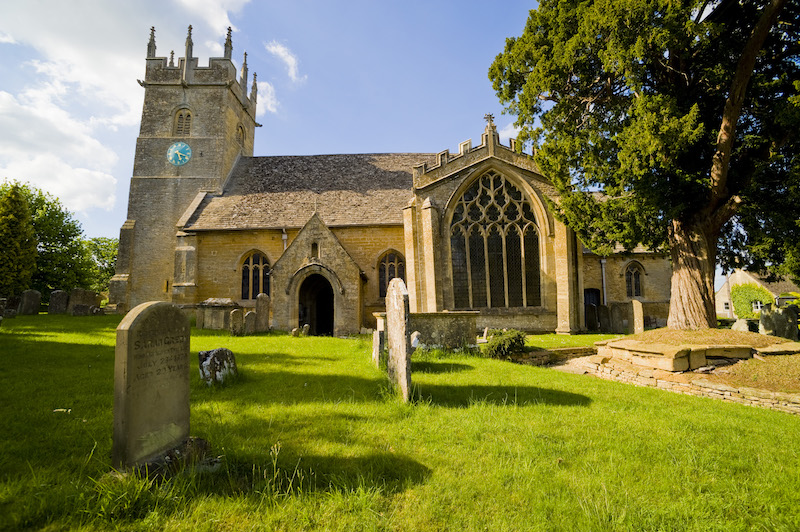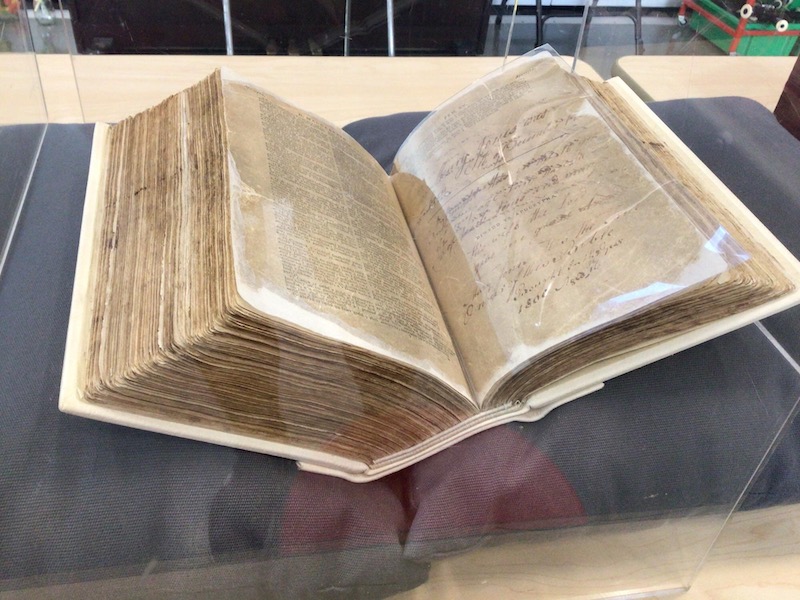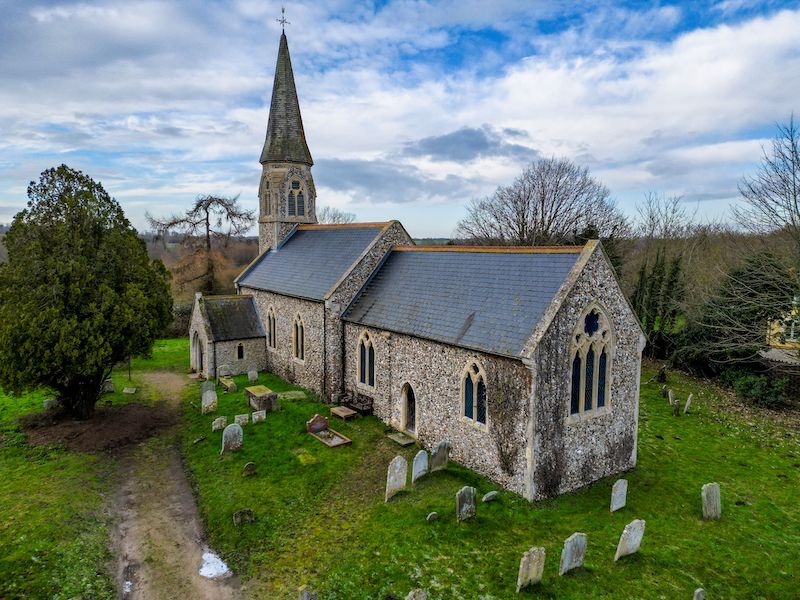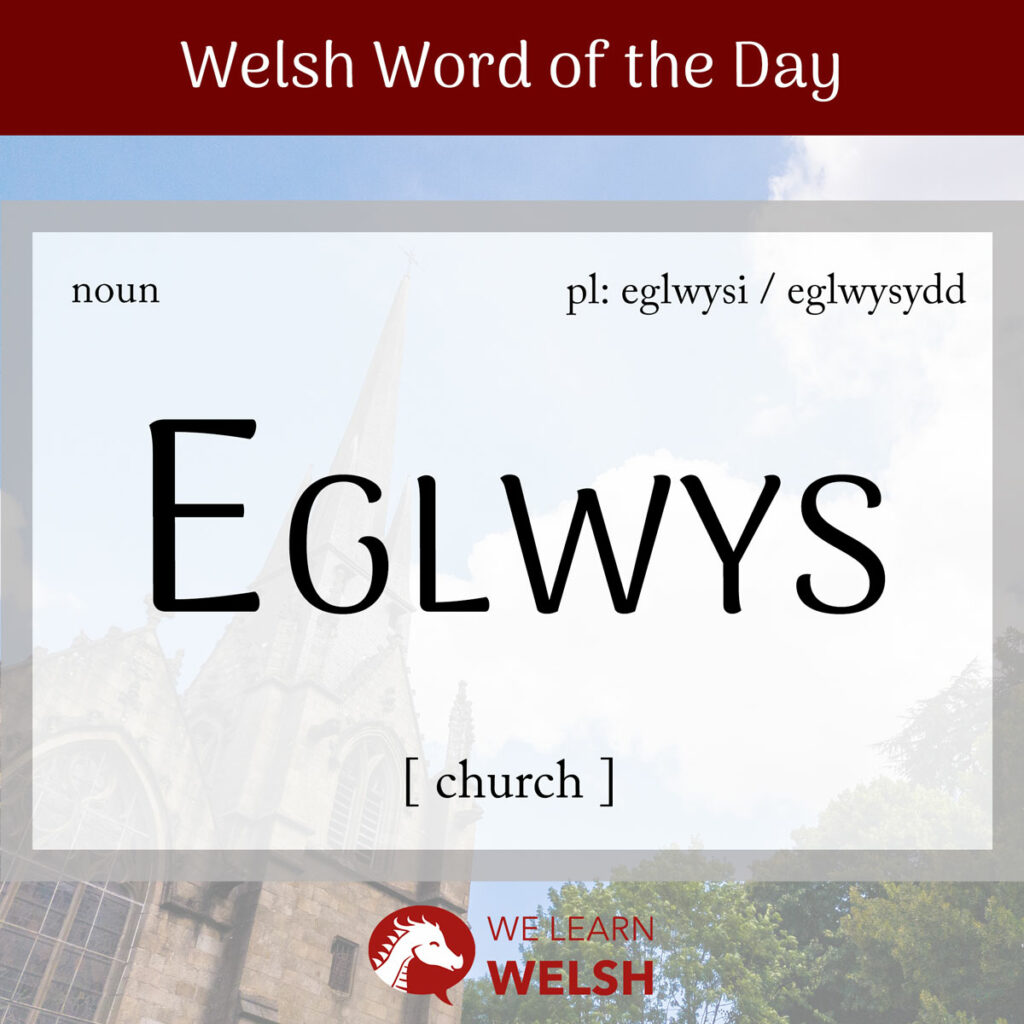Did you know that there are a whopping 40,000 churches in the United Kingdom? They’re buildings that are important to many of us, whether that’s for religious reasons, or simply because they’re a space to engage with community, admire beautiful architecture, and take time to reflect.
The same is true in Wales, which is home to many beautiful churches from various denominations and periods of time. Churches are a big part of Welsh history, geography and culture, and the word church can be translated as eglwys (plural: eglwysi or eglwysydd).
eglwys
church
Here is the northern pronunciation of eglwys:
eglwys
church
The word eglwys is a proto-Brythonic borrowing from Latin, coming from the root word ecclesia, which means church. This was itself borrowed from Ancient Greek ekklesia. There are plenty of related words in other European languages, like ecclesiastic in English, église in French, or even eklezio in the popular invented language Esperanto.
It’s a funny looking word because, to an English speaker, it seems like it doesn’t have many vowels – but of course, in Welsh, the diphthong wy makes a sound like oi in English.
Eglwys is a singular feminine noun. Because it begins with a vowel, it doesn’t undergo any mutations. However, it can undergo h-prosthesis – this happens in Welsh after the possessive pronouns ein (our), ei (her), and eu (their), and it adds a ‘h’ sound to the beginning of words that start with a vowel. So, our church is ein heglwys, for example.
Maen nhw’n addoli yn eu heglwys.
They are worshipping in their church.
To go to church is to mynd i’r eglwys, or simply to eglwysa. At the church, you might pray (gweddïo) or sing in the church choir (côr). Interestingly, in Welsh, you would not use the word eglwys to refer to an actual church service, but only to the building itself – instead, you would use the word gwasanaeth, meaning assembly.
Corau meibion (male voice choirs) are particularly popular in Wales. Below you can watch a video of the Cor Meibion Bro Dysynny, of which Heather’s father is a long-standing member!
There are various types of churches to suit different personal beliefs. Some examples you might consider attending include:
- Eglwys Gatholig Rufeinig= Roman Catholic Church
- Eglwys Anglicanaidd = Anglican Church
- Eglwys Uniongred Ddwyreiniol = Eastern Orthodox Church
- Eglwys Esgobol = Episcopal Church
- Eglwys y Bedyddwyr = Baptist Church
- Eglwys Methodistiaeth = Methodist Church
- Eglwys Efengylaidd = Evangelical Church
- Eglwys Presbyteriaeth = Presbyterian Church
- Gymdeithas Grefyddol y Crynwyr = Quaker Religious Society

A chapel is a capel, whereas a cathedral is an eglwys gadeiriol. One’s local parish church is the eglwys blwyf.
But not everyone is an adherent of Cristnogaeth (Christianity), and anyone of any crefydd (religion) needs an addoldy (place of worship). If you are Moslemaidd (Muslim), you probably pray in a mosg (mosque), if you are Iddewig (Jewish), you will visit the synagog (synagogue), and people of many religions make use of temlau (temples). All of these buildings very often feature beautiful pensaernïaeth (architecture), designed to honour Duw (God) and facilitate ysbrydolrwydd (spirituality) and heddwch (peacefulness).
Ydych chi’n byw yn nes at yr eglwys?
Do you live close to the church?
You’ll find plenty of interesting things in a church – from the pulpud (pulpit) where the offeiriad (priest) delivers pregethau (sermons) to the seddau (pews), the croes (crucifix), and gwydr lliw (stained glass).
There is also usually an ystlys eglwys (aisle), down which a priodferch (bride) will walk at her priodas (wedding). This is called cerdded at yr allor (walking to the altar).
Aethon nhw i’r eglwys ar gyfer Sul y Pasg.
They went to church for Easter Sunday.
Of course, one of the most important things in a church is Y Beibl (the Bible), which is very important to Cristnogion (Christians) of any enwad (denomination).
There is a famous story about a fifteen-year-old girl, Mary Jones, who lived in Abergynolwyn in the 1790s, a time when it was very hard to find Beiblau iaith Gymraeg (Welsh-language Bibles). Mary walked over 26km barefoot in order to buy a bible in Bala, the nearest place where they were on sale at the time.

There is actually one more word for church in Welsh, which is llan. Llan is not used by anyone in everyday conversation, but it survives in place names.
Many towns in Wales begin with Llan, such as Llandrindod, where I grew up, Llanelli, the largest town in the country in which over half of the inhabitants speak Welsh, or the famous Llanfairpwllgwyngyllgogerychwyrndrobwllllantysiliogogogoch. And if you can’t pronounce that last one, don’t worry – most Welsh people can’t either!


